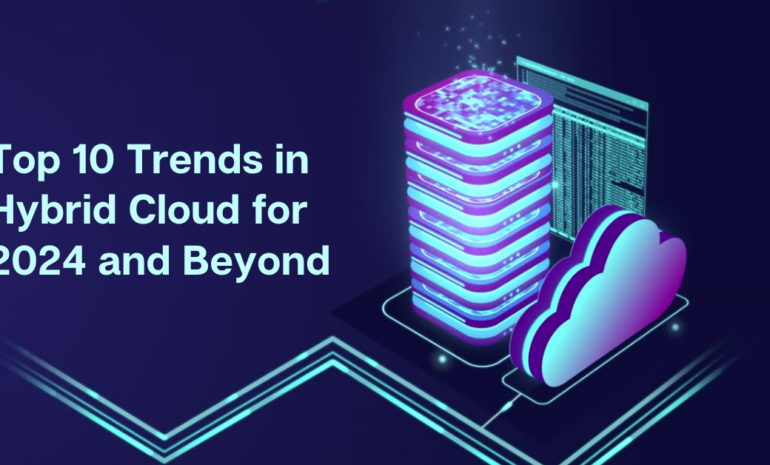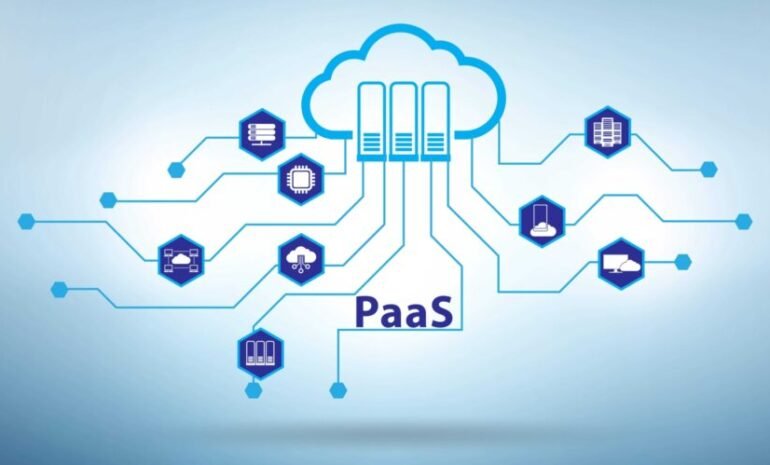Introduction:
In the ever-evolving landscape of technology, businesses are continually seeking innovative solutions to modernize their operations. One of the most pivotal advancements in recent years has been the adoption of hybrid cloud architectures. As we step into 2024, the hybrid cloud is set to undergo transformative changes, leveraging artificial intelligence (AI), edge computing, and seamless integration. In this blog post, we’ll delve into the top 10 trends shaping the future of hybrid cloud, offering businesses unprecedented levels of flexibility, security, and control.
1. Comprehensive Control Planes for Enhanced Flexibility and Control:
- The integration of comprehensive control planes into open source projects marks a major trend in hybrid cloud evolution.
- Enterprises now have the ideal platforms for building and running cloud-native applications, ensuring flexible and secure management of cloud resources across diverse environments.
- As complexity increases, CIOs must invest in platforms that strike a balance between flexibility, adaptability, and robust security protocols.
2. Rise of Hybrid Edge Computing:
- Hybrid cloud options are becoming increasingly essential for optimizing latency-sensitive tasks and facilitating seamless integration between edge, public cloud, and private cloud environments.
- Viewing the edge as an extension of data centers, CIOs face the challenge of maintaining consistent communication and data integrity between edge devices and central cloud infrastructure.
- Investments in edge-to-cloud connectivity and robust security measures become imperative to meet this challenge.
3. Integration of Automation, AI, and Machine Learning:
- Automation and AI are becoming integral components of hybrid cloud environments, streamlining operations, reducing manual errors, and optimizing resource allocation.
- The growing integration of AI and machine learning enhances predictive analytics, data management, and security measures, paving the way for more intelligent and self-managing hybrid cloud systems.
- Starting with small, manageable projects is recommended to address integration complexity, gradually scaling up as organizations become more adept at harnessing the power of AI.
4. AI and Machine Learning at Scale:
- Hybrid cloud architectures are set to fuel the rapid evolution of AI and generative AI, providing organizations with the ability to securely operate in multiple cloud providers.
- This flexibility enables organizations to meet the data and compute requirements necessary for training AI and machine learning models efficiently and rolling them out at scale.
5. Generative AI Initiatives Driving Hybrid Cloud Adoption:
- Organizations are increasingly turning to hybrid cloud models for generative AI initiatives, driven by the need to be more innovative in terms of services and products offered.
- Cloud services provided by vendors are seen as a solution to the data-intensive and expensive nature of rapidly evolving technologies like generative AI large language models.
- Hybrid cloud options, combining vendor-provided AI services and private cloud infrastructure, are expected to gain traction for accelerating research while addressing data privacy and security concerns.
6. Language-Agnostic, Cloud-Native Apps:
- A notable trend is the greater adoption of language-agnostic, open-source platforms to simplify the management of cloud applications.
- These platforms gain popularity due to their ability to support diverse application architectures, providing more flexibility for organizations implementing hybrid cloud strategies.
7. Distributed Security Risks:
- Businesses are increasingly exploring hybrid cloud and multi-cloud strategies to improve their cybersecurity risk posture.
- Operating in more than one cloud environment helps insulate companies from the concentrated risk associated with a single provider, making cloud resilience a top priority for CIOs.
8. Cost Optimization with Multivendor Environments:
- CIOs are benefiting from customized multivendor environments, allowing them to tailor their cloud solutions to meet specific goals.
- Choices like using Arm processors in servers, rather than the traditional x86 model, are considered for potential cost reductions, especially in public cloud environments.
9. Workload Modernization Pushback:
- The cost of modernizing workloads remains a consistent challenge for CIOs looking to transition to the cloud.
- Technology vendors are responding by prioritizing a run-anywhere model, allowing businesses to focus on cloud-native development while still supporting existing on-premises workloads.
10. Performance-Cost Balancing Act:
- Striking the perfect balance in a hybrid application hosting ecosystem becomes a critical task for CIOs to optimize performance and costs.
- Businesses are recognizing that a one-size-fits-all approach is insufficient, strategically placing applications where they perform best, whether in the public cloud or legacy ecosystems.
Conclusion:
As we step into the future, the hybrid cloud continues to be a driving force behind business modernization. Staying abreast of these trends is crucial for organizations aiming to harness the full potential of flexibility, security, and control offered by hybrid cloud architectures. With AI, edge computing, and seamless integration at the forefront, businesses are poised to navigate the evolving landscape successfully, ensuring they remain at the forefront of technological innovation. The hybrid cloud is not just a technology; it’s a strategic imperative for businesses looking to thrive in the digital age.




